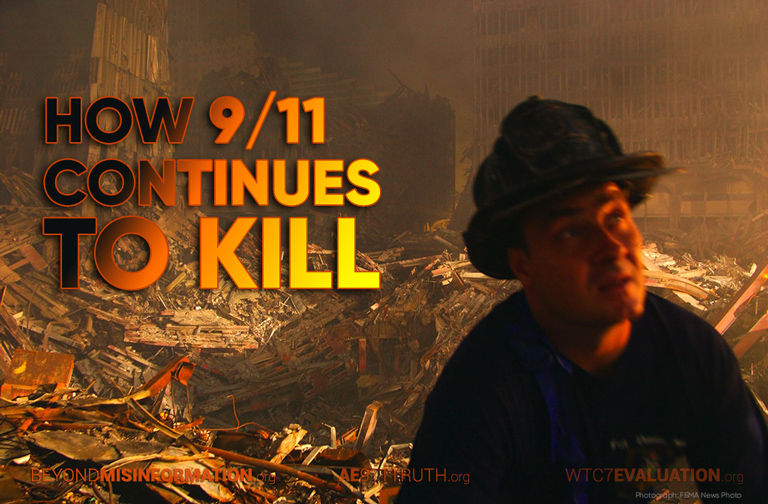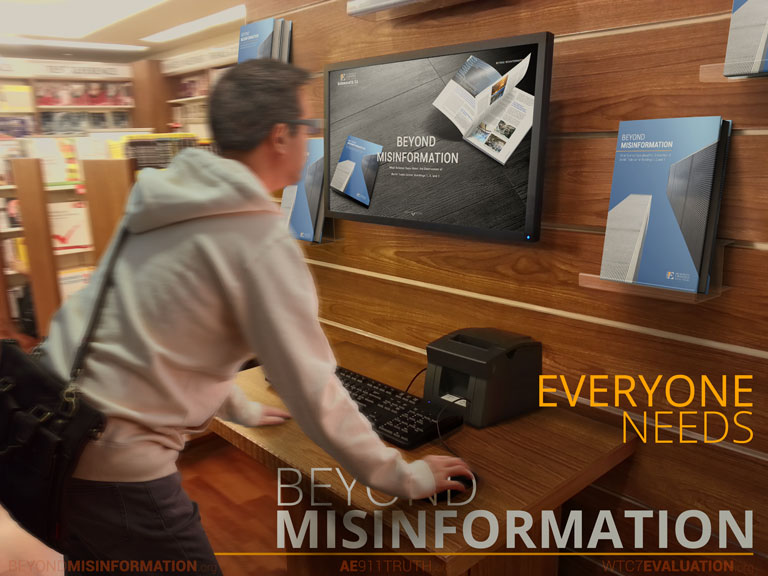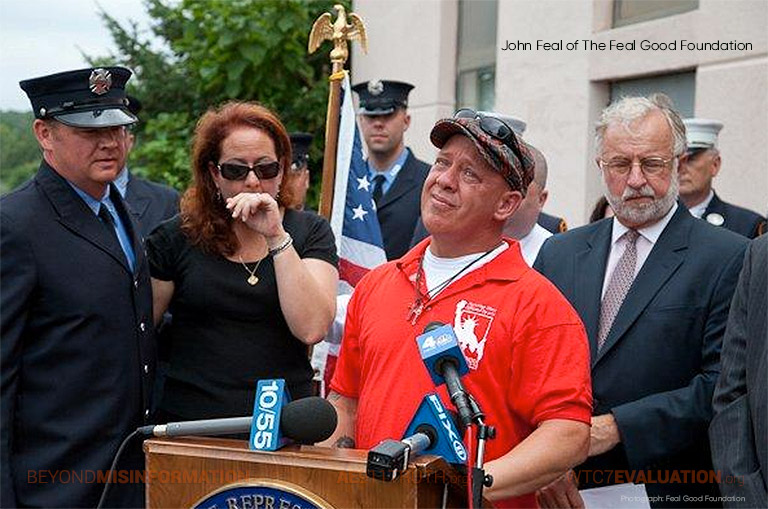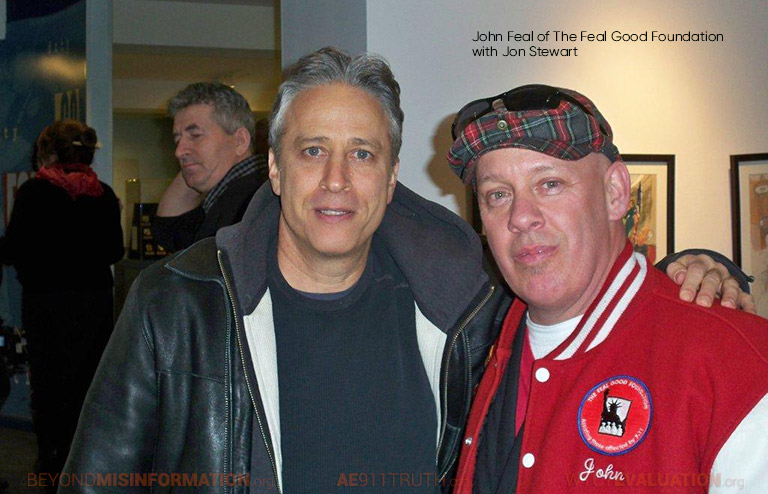Dr. Jonathan Weisbuch says failure to investigate the towers’ destruction has direct health consequences for those exposed to Ground Zero air.
Dust from Imploded WTC Towers Leads to Cancer and Other Illnesses Years Later
Lies can kill. And few lies have killed more than those disguised as the “truth” about what happened on September 11, 2001.
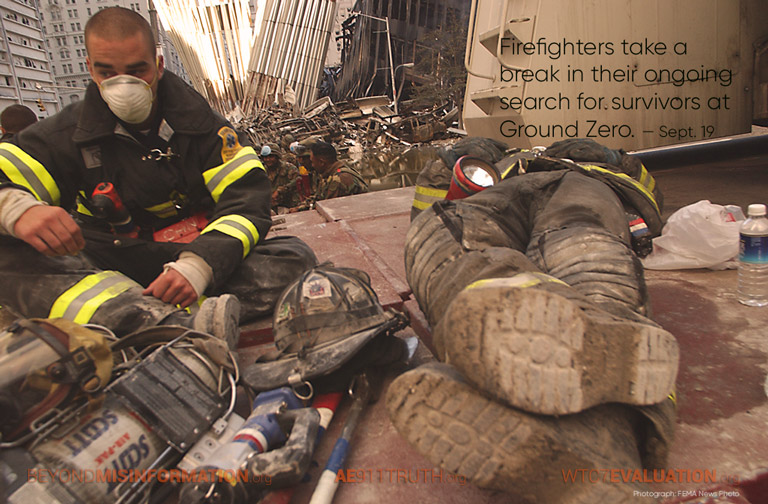
Today, more than 15 years after 9/11, exposing those lies is as relevant and necessary as ever. Not only does the false official narrative about what brought the World Trade Center towers down continue to claim victims in the global “war on terror,” but the false claims about the air quality at Ground Zero on 9/11 and in the weeks and months that followed are still killing hundreds and making thousands of others seriously ill.
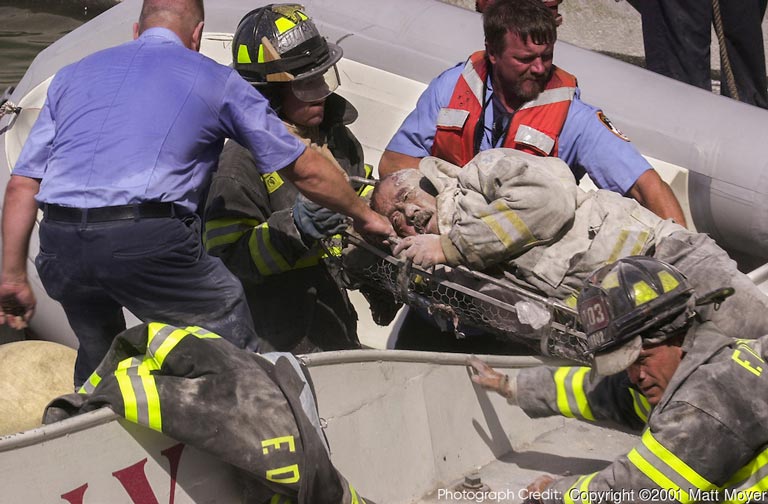
The numbers of first responders, recovery workers, and residents of lower Manhattan who are affected aren’t falling; they’re rising sharply. Even those exposed to the toxic dust and air at Ground Zero who have not become sick have no way of knowing whether that day is lying in wait.
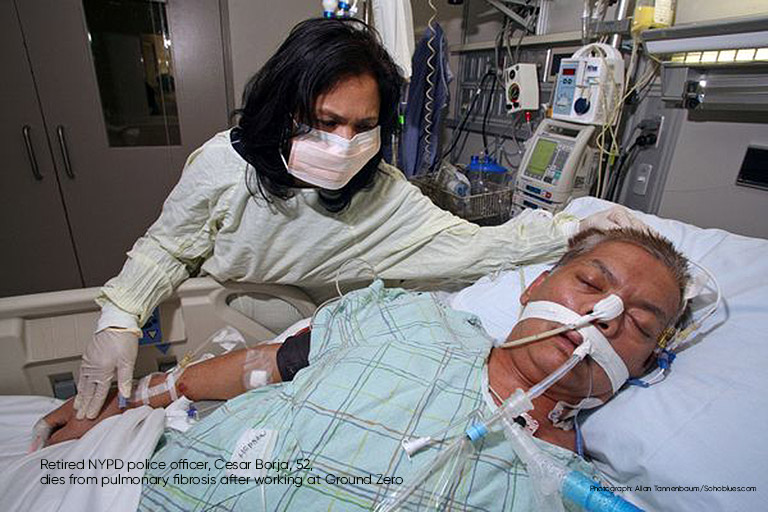
It’s a grim and very sad picture. And it’s made worse by the fact that the public knows so little about what these people are facing. The media have consistently steered attention away from any challenges to the 9/11 official line offered by the government. And this has caused yet more death and pain for those who were there and for the victims' families as they continue to fight to get their plight recognized.

Few of us are aware that 75,000 people have registered for the World Trade Center Health Program and that about half of them have contracted a wide range of diseases, from asthma to pulmonary disease, from gastric reflux to psychological ailments like Post Traumatic Stress Disorder. As of the summer of 2016, more than 1,100 individuals who had inhaled the WTC dust had died from 9/11-related diseases.
Public health physician Jonathan Weisbuch, who founded Medical Professionals for 9/11 Truth and is a current member of the 9/11 Consensus Panel, said in an interview that not nearly enough study has been done on the injuries and illnesses suffered at Ground Zero on 9/11. Weisbuch says he knew something was wrong when reports of illnesses emerged from not only rescue and recovery workers but also from those who lived or worked in the area.
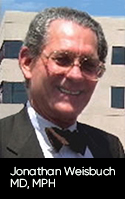 “There were reports of health problems — asthmatic problems, lung problems, and so on — and so I said there’s something more going on here,” he recounts. In fact, it was in part his concern about these illnesses, he explains, that led him to form Medical Professionals for 9/11 Truth.
“There were reports of health problems — asthmatic problems, lung problems, and so on — and so I said there’s something more going on here,” he recounts. In fact, it was in part his concern about these illnesses, he explains, that led him to form Medical Professionals for 9/11 Truth.
Weisbuch asserts that the failure of authorities to properly investigate the real cause of the high-rise buildings' fall has had direct health consequences for both those who are already sick and those who will become sick in the future. If investigators were to look beyond the official explanation of plane impacts, he says, they might better understand some of the direct causes of illness — causes they have thus far been unwilling to consider.
For example, says Weisbuch, the iron microspheres that have been identified by a team of scientists in the Ground Zero dust had to have been created by the use of thermite or nano-thermite in the controlled demolition of the towers — and possibly led to the symptoms found in many victims of 9/11-related illnesses.

Calls for quick clean up to blame?
Steven Jonas, professor emeritus of Stony Brook University School of Medicine's Department of Preventive Medicine and the Program in Public Health, suggests that officials' urgency to remove the forensic evidence from Ground Zero quickly could have had a lot to do with why workers were not kept away from the site for their own safety.
“The role of [New York City Mayor Rudy] Giuliani is absolutely critical,” Dr. Jonas said in an interview. “For one thing, [Giuliani] said there’s nothing to worry about. Second thing is that Giuliani made sure to clean up as much of the wreckage as possible so that it could never be examined forensically.
“What [Environmental Protection Agency Administrator Christine Todd] Whitman and Giuliani did,” he continues, “has affected the lives of thousands, if not tens of thousands, in terms of their health.”
While the U.S. government and the corporate-controlled mainstream media would have us believe that the deaths and illnesses from Ground Zero are the result of the impact of two Boeing 767 airliners on and resulting fires in the Twin Towers, the abundance of forensic evidence compiled by Architects & Engineers for 9/11 Truth and other researchers demonstrates that the official version of events cannot be true. (As we know, WTC 7, which fell in the late afternoon of 9/11, was not hit by an airplane.) This physical evidence clearly shows that the three World Trade Center towers were deliberately demolished using explosives that had to have been planted in the buildings prior to that day.
Also false was the government's claim that recovery workers and those living near Ground Zero in 2001 had nothing to fear from breathing the air in the aftermath of the event.
As early as September 13, 2001, the EPA was reporting that asbestos levels around Ground Zero were “generally low.” A press release dated September 18 included this statement from EPA chief Whitman: “Given the scope of the tragedy from last week, I am glad to reassure the people of New York and Washington, DC that their air is safe to breathe and their water is safe to drink.”
But it wasn’t. One is left wondering how many people have died or become seriously ill because of that false assurance.

A 2003 report by the EPA’s Office of the Inspector General stated that the White House Council on Environmental Quality pressured the EPA to add “reassuring statements” to agency press releases and to “delete cautionary ones.” The report specified that some EPA press releases had in fact been altered before being made public because of White House pressure.
Four years later, the U.S. Court of Appeals for the Second Circuit threw out a class-action lawsuit against Whitman, citing the importance of returning the City of New York to a normal routine as quickly as possible. In his 2007 decision, the circuit's chief judge, Dennis Jacobs wrote:
 “Can the goals of a government policy possibly outweigh a known risk of loss of life or bodily harm? The EPA and other federal agencies often must decide whether to regulate particular conduct by taking into account whether the risk to the potentially affected population will be acceptable. Such decisions require an exercise of the conscience, but such decisions cannot be deemed egregious, conscience-shocking, and “arbitrary in the constitutional sense” . . . merely because they contemplate some likelihood of bodily harm. Moreover, mass displacement, civil disorder and economic chaos in an urban area also can result in bodily harm and loss of life.”
“Can the goals of a government policy possibly outweigh a known risk of loss of life or bodily harm? The EPA and other federal agencies often must decide whether to regulate particular conduct by taking into account whether the risk to the potentially affected population will be acceptable. Such decisions require an exercise of the conscience, but such decisions cannot be deemed egregious, conscience-shocking, and “arbitrary in the constitutional sense” . . . merely because they contemplate some likelihood of bodily harm. Moreover, mass displacement, civil disorder and economic chaos in an urban area also can result in bodily harm and loss of life.”
He added: “When great harm is likely to befall someone no matter what a government official does, the allocation of risk may be a burden on the conscience of the one who must make such decisions, but does not shock the contemporary conscience.”
Also in 2007, Whitman was called to testify before a congressional committee. When questioned, she maintained that she had done nothing wrong when she told the public that the air around Ground Zero was safe to breathe and the water safe to drink.
To this day, Whitman contends that her job was to pass along to the public information from qualified scientists about the air quality at the site. But in September 2016 she apologized for the first time to those who have become ill, admitting that the information she had been given was incorrect.
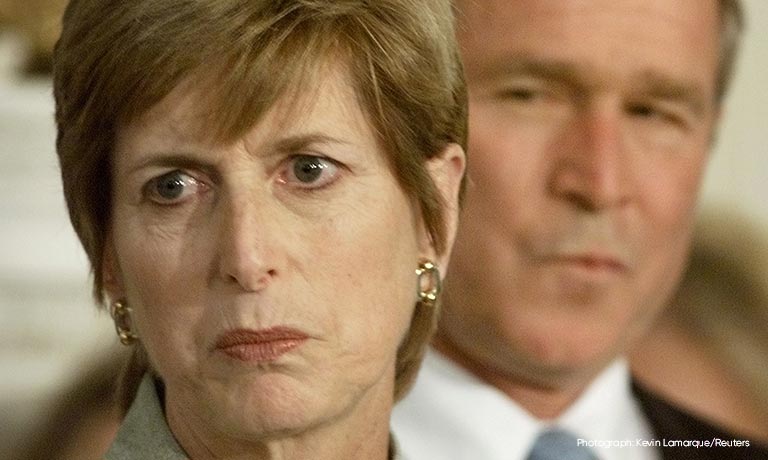
“I’m very sorry that people are sick,” she said. “I’m very sorry that people are dying and if the EPA and I in any way contributed to that, I’m sorry. We did the very best we could at the time with the knowledge we had.”
Newsweek published an article in July 2016 titled “911’s second wave: cancer and other diseases linked to the 2001 attacks are surging.” Its author, Leah McGrath Goodman, reported that, according to the U.S. Centers for Disease Control and Prevention (CDC) and the National Institute for Occupational Safety and Health, there were 411 deaths among rescue and recovery workers on 9/11 but that the number of workers who have since succumbed exceeds 1,100. Goodman also related that doctors with the World Trade Center Health Program have linked more than 70 types of cancers to Ground Zero exposure.
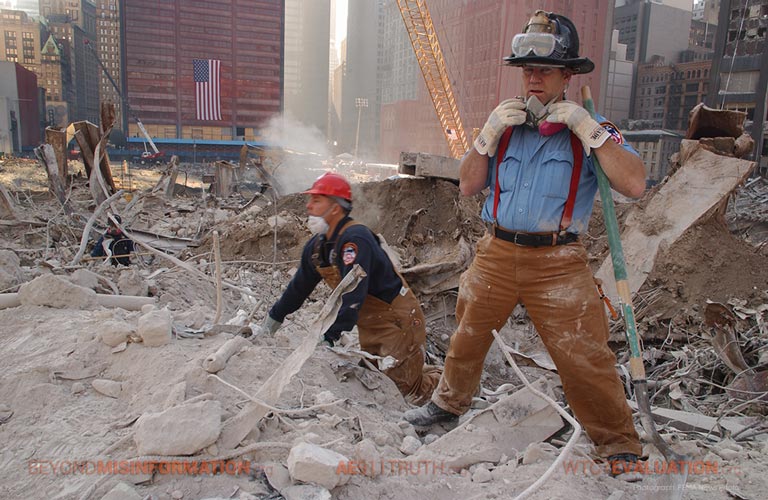
As of June 2016, more than 5,400 of the individuals diagnosed with cancers directly related to 9/11 have enrolled in the World Trade Center Health Program (WTCHP). That figure is roughly triple the 1,822 who had signed up for the program as of January 2014.
Mount Sinai Hospital's Dr. Michael Crane, who works with the WTCHP, told Newsweek that he sees 10–15 new cases of cancer among first responders every week. Crane lists some of the materials recovery workers breathed in, both on and after September 11, 2001:
“We will never know the composition of that cloud, because the wind carried it away, but people were breathing and eating it. What we do know is that it had all kinds of god-awful things in it. Burning jet fuel. Plastics, metal, fiberglass, asbestos. It was thick, terrible stuff. A witch’s brew.”
One such victim was artist Janette MacKinlay, whose apartment building stood very close to the World Trade Center. In 2010 MacKinlay died of brain cancer that appears to have been caused by her exposure to the toxic Ground Zero environment. MacKinlay was well known — and greatly admired — within the 9/11 Truth Movement, in part for having had the presence of mind to collect dust samples from the destruction of the towers. She sent those samples to Dr. Steven Jones, one of the co-authors of the research paper “Active Thermitic Material Discovered in Dust from the 9/11 World Trade Center Catastrophe.”
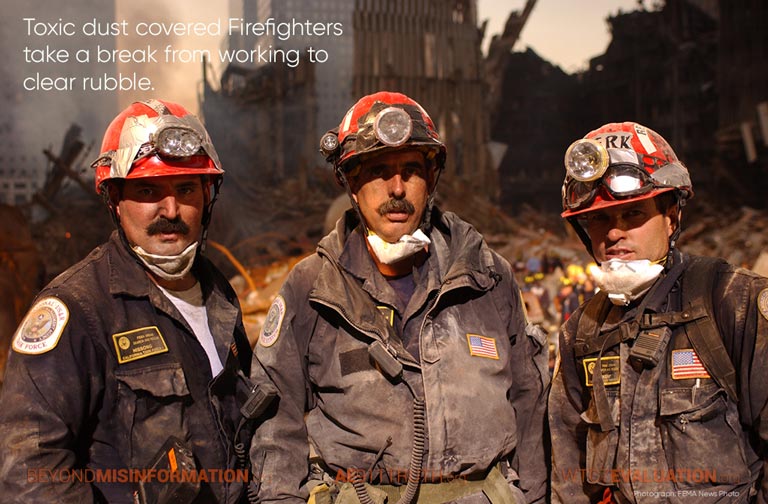
Another victim of the dangerous environment at Ground Zero who, like MacKinlay, decided to take action was John Feal, a demolition supervisor who started working at the site the day after 9/11. Feal had to have half of his left foot amputated after it was crushed by a metal beam in the rubble. He subsequently created the Feal Good Foundation, an organization that fights for healthcare and compensation for those who have become ill.
“My illness pales in comparison to those who are deathly ill and dying,” Feal said in one TV interview. “These men and women deserve better, and that’s why I started my foundation.”
“I don’t take medication for my post traumatic, I was diagnosed by four doctors with it, but running my foundation and helping people is my therapy and to prove that I wasn’t sick like everybody but to raise awareness I even donated a kidney. And since I donated that kidney, so many 9/11 responders are now getting kidney transplants.”
What has been done?
For a good part of the more than 15 years since 9/11, a fight has been underway to gain compensation and medical care for those whose health has been affected by their exposure to the toxic air at Ground Zero. Victories have come, but slowly, and not without a sustained fight. These efforts have involved lawsuits, a settlement, a piece of legislation, and an ongoing program managed by the Centers for Disease Control and Prevention (CDC).
Since 2003, numerous lawsuits have been filed by firefighters, police officers, construction workers, and emergency responders against the City of New York and against various companies hired to remove debris from Ground Zero. One major suit resulted in a 2010 settlement of $657.5 million that was distributed among 10,000 plaintiffs. The settlement includes $23.4 million designated for illnesses that have yet to be diagnosed or that may occur in the future.
 Meanwhile, a federal bill called the James Zadroga 9/11 Health and Compensation Act, which provides health care to those with 9/11-related illnesses, has become law. It was named after the first New York City police officer to die from exposure to the air at Ground Zero. James Zadroga, a detective, spent hundreds of hours at Ground Zero looking for survivors.
Meanwhile, a federal bill called the James Zadroga 9/11 Health and Compensation Act, which provides health care to those with 9/11-related illnesses, has become law. It was named after the first New York City police officer to die from exposure to the air at Ground Zero. James Zadroga, a detective, spent hundreds of hours at Ground Zero looking for survivors.
Though the act was first introduced in 2006, the year of his death, it was not enacted at that time. After being revised and reintroduced in 2009, the new version of the Zadroga Act was passed by the House of Representatives in September 2010. Next it went to the Senate, where a Republican filibuster left its fate uncertain. Some heavy lobbying — including by former Daily Show host Jon Stewart, who devoted an entire episode of his show to the subject — shamed legislators into supporting a bill that most citizens feel should have been supported without reservation.
On the front lines of treating those whose health has been affected by exposure to the air in lower Manhattan is the aforementioned World Trade Center Health Program, which is administered by the CDC and which was established as part of the Zadroga Act.
There have been still other efforts to help the victims through the years. The The September 11 Victim Compensation Fund, for example, helps first responders who are too sick to work and their families. The fund was set up in 2001 to provide compensation for anyone who suffered physical harm or was killed at Ground Zero (or their personal representative in the case of the latter) from the “terrorist-related aircraft crashes of September 11, 2001” or “from the debris removal efforts that took place in the immediate aftermath of those crashes.” It was extended another five years at the same time as the Zadroga bill was passed. In 2015, the deadline for the filing of claims was again extended — this time until December 18, 2020.
CNN reported on the victim compensation fund in August 2016:
“The entire World Trade Center Health Program has approximately 75,000 members to date. In addition to those with 9/11-linked cancer diagnoses, more than 12,000 have been diagnosed with 9/11-related mental health issues. More 32,000 have been diagnosed with aero-digestive issues, such as asthma, chronic cough, gastroesophageal reflux disorder or chronic obstructive pulmonary disease, connected to the attacks.”
New research by the World Trade Center Health Registry (which was created in 2002 by the New York City Department of Health and the federal Agency for Toxic Substances and Disease Registry), published in 2016 in the American Journal of Industrial Medicine, found that those with 9/11-related chronic health conditions were more likely to experience early retirement or job loss. It also found that all types of cancers were occurring at higher than normal rates among rescue and recovery workers as well as civilian survivors.
There are many bad days ahead as more and more die or become ill. Those who gave unselfishly of their labor and their time to help with rescue and recovery efforts at the World Trade Center site — or people who simply lived or worked close by — are not only getting sick in growing numbers but they have had to fight for years to have their health struggles recognized and addressed by the very government that told them the air at Ground Zero was safe to breathe.
According to the research, those in the WTCHR program who were in the World Trade Center towers at the time of the event were 30 percent more likely to have PTSD and 50 percent more likely to be frequent binge drinkers 10 years after 9/11. Even workers involved in World Trade Center recovery at the Fresh Kills Landfill and on barges had an increased risk of new-onset asthma, and they further illustrate why the mission of Architects & Engineers for 9/11 Truth remains so vital.
Those who suffer from cancer and other illnesses as a result of 9/11 are the victims of a deliberate decision to demolish the buildings, which turned the towers into the toxic dust that invaded their bodies. For them, 9/11 isn't an event that happened more than 15 years ago. For them, it's still happening, still killing. The dual need to educate the public about what destroyed the three towers and to obtain a new investigation is as relevant and essential today as it was in the years immediately following 9/11.
The truth about what these people were exposed to and what it did to them physically was hidden and denied for years. Just as the truth about how the three World Trade Center towers really came down has been hidden and denied. The consequences of both lies have been catastrophic.
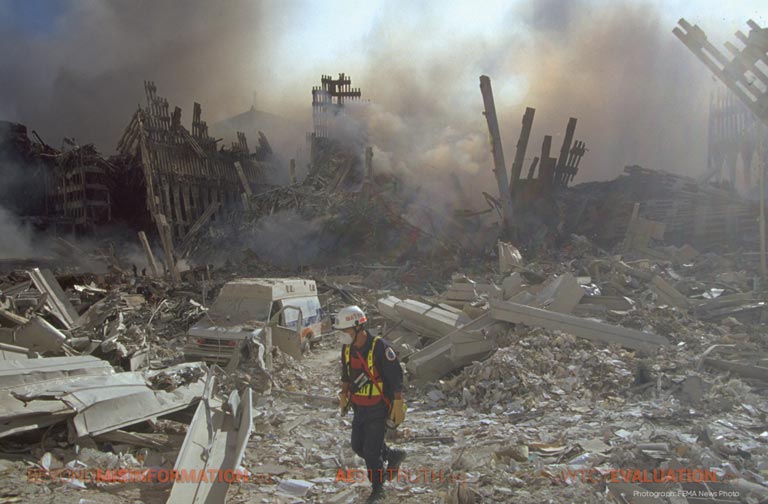
But whether it happens gradually or suddenly, truth has a way of breaking through if enough people take a stand. I’m reminded of singer/songwriter Paul Simon being invited to perform at the 10th anniversary ceremony for 9/11 in 2011, a ceremony that first responders had been excluded from attending. He was expected to sing Bridge Over Troubled Water, which would seem to be a safe and appropriate song for the occasion. But instead, he gave us a haunting version of another classic, which begins, “Hello darkness, my old friend.” Simon had decided that the most appropriate statement for this occasion would come from The Sound of Silence.
Fools, said I, you do not know
Silence like a cancer grows…
Perhaps Simon decided that silence had already claimed enough victims.
Craig McKee is a journalist and the creator of the blog Truth and Shadows.





